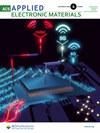Insect conservation in agricultural landscapes needs both high crop heterogeneity and semi-natural habitats
IF 4.3
3区 材料科学
Q1 ENGINEERING, ELECTRICAL & ELECTRONIC
引用次数: 0
Abstract
Identifying landscapes that are suitable for both biodiversity conservation and agricultural production is a major challenge. Traditionally, much research has focused on biodiversity conservation outside of agricultural production areas, e.g., in semi-natural habitats. In contrast, recent research has mainly focused on the potential of crop heterogeneity. This includes both compositional (crop diversity) and configurational heterogeneity (field border density). However, if and how crop heterogeneity, and semi-natural habitats interact to shape insect diversity in agricultural landscapes remains poorly understood. Here we investigated the combined effects of crop diversity, field border density, and semi-natural habitats (i.e., grassland proportion, hedge density) on insect diversity. We sampled insect communities from 14 – 17 June 2021 with pan traps in 27 study landscapes (500 m x 500 m) covering independent gradients of these landscape variables and identified a total of 587 insect species with DNA metabarcoding. We found that field border density mediated the effects of crop diversity, grassland proportion, and hedge density on insect richness. At low levels of field border density (i.e., landscapes with mostly large fields), effects were either neutral (crop diversity), negative (grassland proportion) or weakly positive (hedge density). By contrast, at high levels of field border density, crop diversity, grassland proportion, and hedge density all exerted positive effects on insect richness. Responses to crop heterogeneity and semi-natural habitat differed among trophic groups of insects (decomposers, herbivores, parasitoids, predators). While variation in richness of herbivorous insects followed the patterns of the overall richness, decomposer richness was not related to any of the investigated variables. Predator richness increased with hedge density in landscapes, whereas parasitoid richness increased when high levels of field border density and grassland proportion coincided. Our study shows that increasing crop heterogeneity is a viable strategy for promoting insect diversity in agricultural landscapes. However, the effects of the amount of remaining semi-natural habitats, such as grassland or hedges, are mediated by configurational heterogeneity, and vary between trophic groups. Efforts to conserve insects in agricultural landscapes must therefore focus on both increasing the heterogeneity of the crop matrix by promoting crop diversity and increasing the density of field borders, while also maintaining or restoring semi-natural habitats as important source habitats for insect species.
农业景观中的昆虫保护需要高度的作物异质性和半自然栖息地
确定既适合生物多样性保护又适合农业生产的景观是一项重大挑战。传统上,许多研究都侧重于农业生产区以外的生物多样性保护,例如半自然栖息地。相比之下,近期的研究主要集中在作物异质性的潜力上。这包括组成异质性(作物多样性)和配置异质性(田间边界密度)。然而,人们对作物异质性和半自然栖息地是否以及如何相互作用形成农业景观中的昆虫多样性仍然知之甚少。在此,我们研究了作物多样性、田间边界密度和半自然栖息地(即草地比例、树篱密度)对昆虫多样性的综合影响。2021 年 6 月 14 - 17 日,我们在 27 个研究景观(500 米 x 500 米)中使用盘式诱捕器对昆虫群落进行了取样,这些景观变量覆盖了独立梯度,并通过 DNA 代谢编码鉴定了共 587 种昆虫。我们发现,田边密度介导了作物多样性、草地比例和树篱密度对昆虫丰富度的影响。在田地边界密度较低的情况下(即大部分为大面积田地的景观),影响要么是中性的(作物多样性),要么是负的(草地比例),要么是弱正的(树篱密度)。相比之下,在田边密度较高的情况下,作物多样性、草地比例和绿篱密度都对昆虫丰富度产生了积极影响。不同营养昆虫群(分解者、食草动物、寄生虫、捕食者)对作物异质性和半自然生境的反应各不相同。食草昆虫丰富度的变化遵循总体丰富度的模式,而分解者的丰富度则与任何调查变量无关。捕食者的丰富度随景观中绿篱密度的增加而增加,而寄生虫的丰富度则在田边密度和草地比例较高的情况下增加。我们的研究表明,增加作物异质性是促进农业景观中昆虫多样性的可行策略。然而,剩余半自然栖息地(如草地或树篱)的数量对昆虫多样性的影响是由配置异质性介导的,并且在不同的营养群之间存在差异。因此,保护农业景观中昆虫的工作必须侧重于通过促进作物多样性和增加田间边界密度来增加作物基质的异质性,同时还要保持或恢复作为昆虫物种重要来源栖息地的半自然栖息地。
本文章由计算机程序翻译,如有差异,请以英文原文为准。
求助全文
约1分钟内获得全文
求助全文

 求助内容:
求助内容: 应助结果提醒方式:
应助结果提醒方式:


